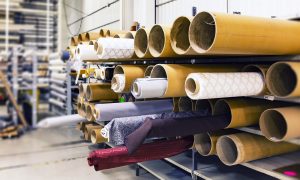Clothing is a basic necessity of life. Nobody can function without clothing. You can almost find a different type of clothing garment to fit a situation. Sportswear apparel is one of the more popular trends seen this year. Basketball hoodies, shorts and singlets require a different process to manufacturing a knitted cardigan. Manufacturing clothing is not a luxury. This is the reason the garment manufacturing business has grown over the years. Quite a few machines are utilised during the whole production process. Machines to aid with just about all the stages are found on the marketplace.
Spinning is all about converting raw materials such as silk, cotton, wool, and others into yarn. Weaving involves converting the yarn into cloth. The fabric has to be dyed and printed to create textiles, and then the fabrics are finally stitched right into clothes.
The next step in the creation of garments is the weaving of fabrics. Within this stage of garment production, yarns which are used are interlaced at right angle to form a cloth. It holds the rows of threads tight when columns of threads are interlaced between them.
Following the making of fabric from yarn, the then ready fabric needs to be printed and dyed. Various textile printing machines can be found in the market that helps in this activity. Digital textile printing machines would be the most innovative of all in modern times.
Preparing clothes from fabric or textiles is the next activity in the four stage production process. This can be achieved by stitching the pieces of fabric together by clipping them where suitable. Sewing machines are available in the market for this purpose, however individual assistance will always be required in this process.
As understood with the process discussed above, various kinds of textile machines are used during the production of clothes. Spinning machines, machines for weaving and knitting, machines for printing, machines for dyeing, sewing machines, and various other machineries which can be found on the market.

Pressing Machines
Pressing machines are employed in the last stage of the apparel production process before your goods hit the market. There are different kinds of pressing machines with particular pressing requirements for the different types of garment. For example, a form finishing machine can help you complete coats, skirts and blouses. Small cabinet press machines are used to press tops before buttoning to prevent button marks onto the last apparel. A tunnel finisher is needed when manufacturing knitwear because it helps in gentle seaming and instant drying of the garment.
Sewing Machines
Garment manufacturing requires you to purchase sewing machines, which help to join a variety of sections of a garment. There are various sorts of sewing machines, depending on the specific application you require. The pocket sewer machine is used for stitching pockets of blazers, while chain stitch is used in stitching woven and knit material. Making button holes in a garment needs a button hole sewing machine, and also a lock stitch machine which applies to most types of apparel. A two-needle lock stitch machine is utilised in creating embellishments and decorations on clothes.
Knitting Equipment
Knitting machines are used to manufacture knitted apparel. They include single jersey machines, flat bed and dual jersey knitting machines. Single jersey machines have a tube measuring 30 inches that contains needles for making plain fabrics. A dual jersey machine includes extra needles that help in producing items that are double or thicker compared to single jersey garments. Flat bed knitting machines are versatile and assist in adding parts, such as collars, v-necks and pockets onto a garment. When deciding on a knitting machine, consider elements such as number of needles, diameter and brand reputation.
Cutting machines
Cutting machines can either be computerized or manually operated to cut fabrics into various shapes. Examples include straight knife, hand shears, band knife and computerized cutting knives. Computerized knives are the quickest and most precise, whereas a straight knife suffices when the quantity is low. A computerised process is best used for manufacturing basketball shirts and basketball shorts. A band knife provides a better cutting precision than a straight knife. Hand shears are applicable in cutting off single or even double plies, even though it is time consuming.